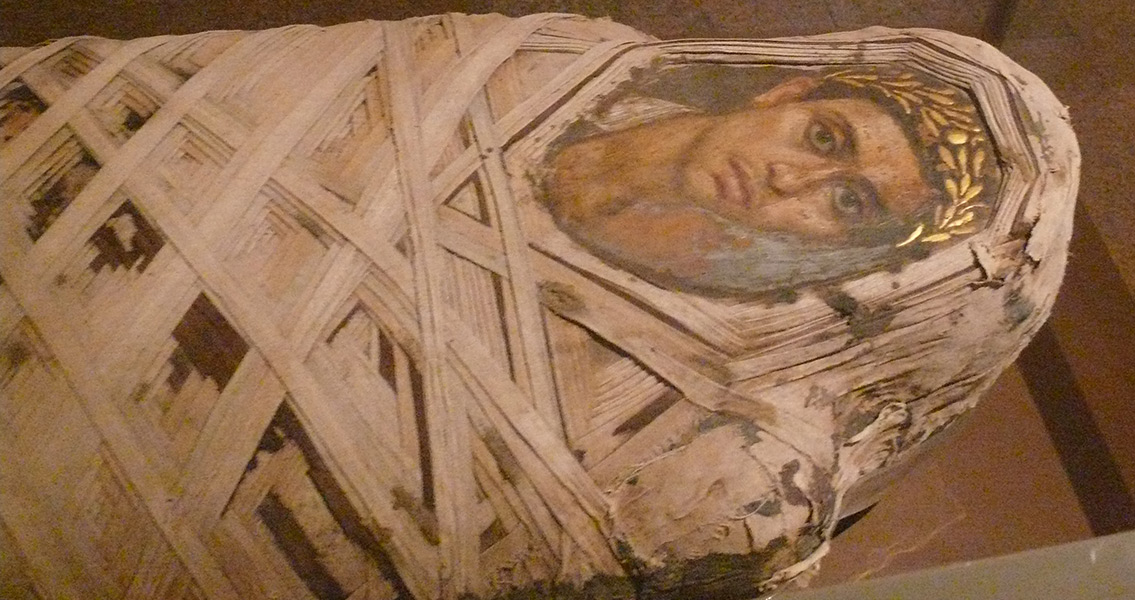<![CDATA[Two mummies and their sarcophagi have been retrieved from sewage water. According to a statement by the Egyptian Ministry of Antiquities, the sarcophagi were recovered from the dirty irrigation canal where they were found floating near El Minya, Egypt. The effluent had so contaminated the sarcophagi to such an extent that they have since disintegrated. From the designs on the sarcophagi and the style of burial, it is clear that the mummies are from the Greco-Roman era in Egyptian history, 332 BCE to 395 CE. Before disintegrating from contamination, scientists were able to observe that the sarcophagi were richly decorated in the contemporary Greco-Roman style. There were colourful depictions of women's faces on the sarcophagi tops; these 'Fayum portraits' often depicted the head and chest of the deceased. Fayum portraits were painted onto a panel with encaustic wax or egg-tempera painting techniques. Fayum portraits are very susceptible to damage as they are made using organic materials. The sarcophagi also were adorned with colourful designs, but no Egyptian writings or hieroglyphics were found. The mummies themselves were relatively protected from the harsh conditions in the canal as they were wrapped in thick layers of linen. Few human remains, however, were left after such a long time. Currently, it is unclear why the sarcophagi were in sewage in the first place, but experts suspect foul play. It is thought that the ancient artefacts were deliberately dumped after having been illegally excavated. Rather than being found with priceless items, looters could well have ditched the mummies so as to not be caught. Youssef Khalifa, Head of Antiquities at the Ministry of Antiquities, said the robbers may have resorted to dumping these sarcophagi in the irrigation canal when they felt that authorities were closing in on them, or perhaps when they were approaching a security checkpoint. Looting of historical sites and illegal excavations are a worldwide problem, but in Egypt they are particularly rampant. In June 2014, a National Geographic-funded satellite imaging survey examined more than 4,000 archaeological sites in Egypt and found tens of thousands of looting pits dotting the landscape. Sarah Parcak, the archaeologist who led the survey, has stated that "wholesale looting is occurring all over Egypt, and we are seeing a big spike that came after the revolution. If we don't do something to stop it, most [historical] sites in Egypt will be gone in 25 years. Egypt employs roughly 1,200 guards at archaeological sites, although most make about $40 a week; this means that they can be tempted by looters' bribes. Illegal excavations are often associated with armed gangs, making the policing of archaeological digs very dangerous. The El Minya mummies are in a poor condition as a result of being in effluent; their loss is a major blow to conservationists and the wider Egyptian people who have lost part of their historical heritage. Despite their poor state of preservation, Youssef Khalifa has announced that the mummies and the remains of their sarcophagi will be restored and put on display at the Hermopolis Museum, near El Ashmunein in Al Minya governorate. Wikimedia Commons, own work by Ad Meskens.]]>
Ancient Egyptian Mummies Found in Sewage
